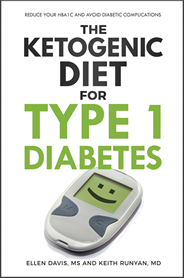Ketosis Symptoms
Ketosis symptoms are a result of the way the body gets rid of the excess ketone bodies which build up in the blood stream when a person eats a low carb, ketogenic diet.
In short, the body has three ways of dealing with excess ketone bodies:
- First, the muscles liver and brain can burn them for energy in the cells.
- Second, the body can breathe ketones out through the lungs.
- And third, the body can flush ketones out through the kidneys and urine.
The ketosis symptoms associated with the benign dietary ketosis caused by eating a low carb, ketogenic diet are not dangerous. They may differ for each individual, with the most common symptoms being:
- Ketosis breath, which has a fruity odor, and the person in deep ketosis may feel a sort of slight burning in the nose and a slight smell of ammonia.
- Dry mouth, which is alleviated by drinking more regular tap or bottled water. (Reverse osmosis water will make this worse.)
- In the first week of beginning a ketogenic diet, most people experience frequent urination followed by fatigue, as insulin levels come down, and the kidneys release extraneous water stores. Minerals such as sodium, magnesium and potassium are also lost with excreted urine, and it is the mineral loss that causes the fatigue. This can be offset by eating more salt, drinking more fluids, and increasing the intake of magnesium and potassium containing foods. (Dairy foods and avocados are high in potassium, and you can drink broth for more sodium.)
- A slight headache at first which goes away in a few days. This is usually a sign of not getting enough salt.
- Ketone bodies become detectable in the urine. Ketone bodies are molecules created by the natural process of burning body fat for fuel. Diabetics and low carb dieters use a product called Ketostix to check for the presence of ketones in the urine, although each group does this for different reasons. If ketones are present, the stick turns purple.
- After several days of ketosis, there may be a sense of euphoria, or an experience of high energy, a very clear thinking and a lack of "brain fog".
- Lack of hunger and weight loss for many people. Some people also report that sugar cravings go away, and they are able to control their food intake much more easily.
If you would like to read more, Jeff Volek and Steve Phinney discuss the new method of checking blood ketones in their book The Art and Science of Low Carbohydrate Performance and Volek and Phinney's book The Art and Science of Low Carbohydrate Living is a good introduction the science of ketogenic diets.
How Do I Check My Ketone Levels?
If you have started a ketogenic diet and want to be able to check your ketone levels, there are several ways to do this. You can buy ketone stix, and check the levels of ketones in your urine. This method has been the most common method for years, but recently, several companies have developed a blood ketone meter for home use. Amy Berger at TuitNutrition.com has a nice post on the why, when and how of checking ketone levels here.
The method of checking ketones in the blood is much more accurate, but is also more expensive.
All of my books are available in electronic PDF, and now in paperback on Amazon!
 |
 |
 |
|
Buy paperbook on Buy paperback on Amazon Buy the e-Book via Paypal |
Buy paperback on Buy paperback on Amazon Buy the e-Book via Paypal |
Buy paperback on Buy paperback on Amazon Buy the e-Book via PayPal |